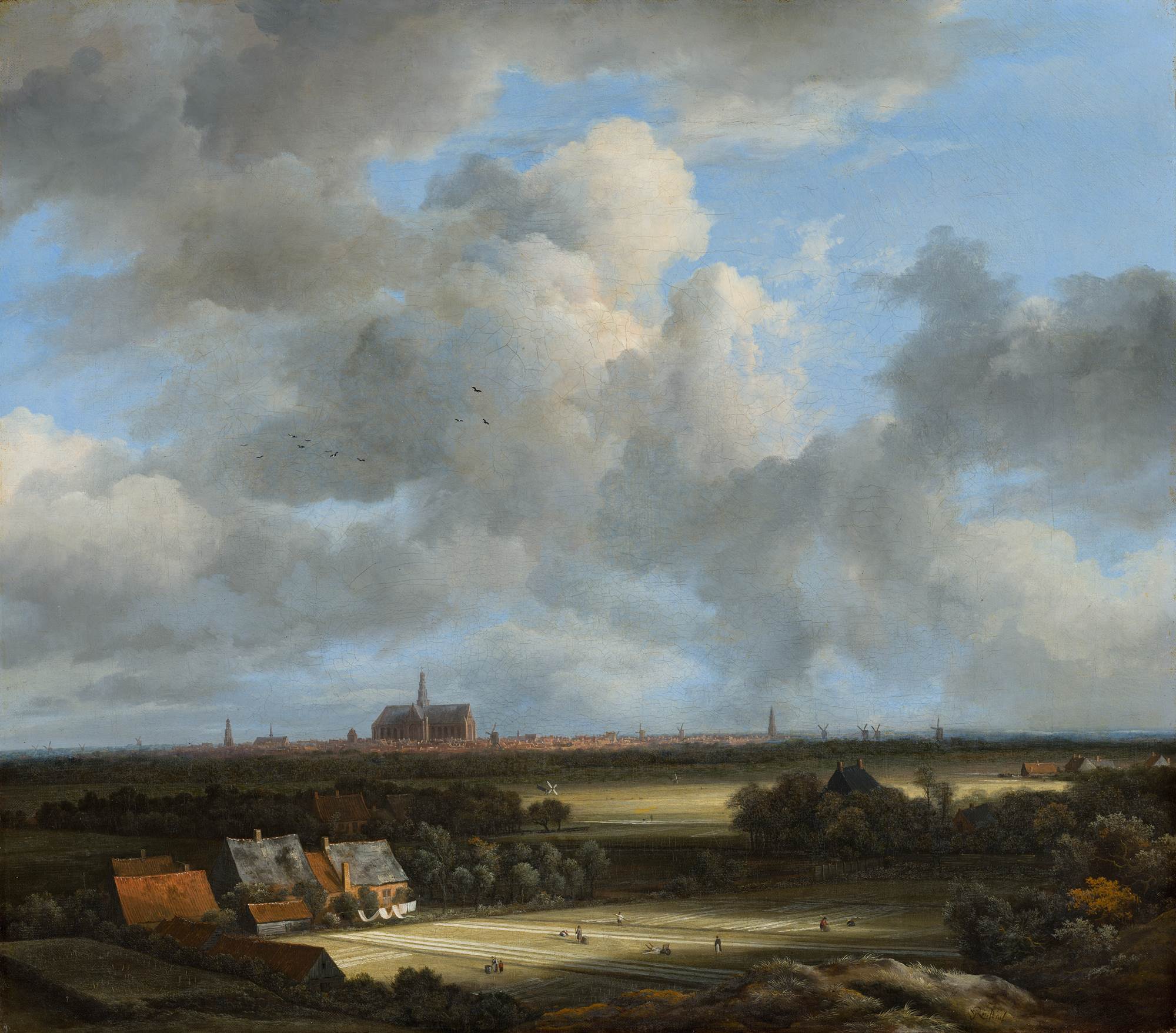In the 1670s Jacob van Ruisdael produced at least fifteen panoramas of the picturesque landscape behind the dunes near Haarlem and Alkmaar, which seventeenth-century inventories called ‘Haarlempjes’ (Haarlem scenes). For this painting he made a preliminary drawing from the top of some high dunes to the west of Haarlem, which he would later use for reference in his studio. The city’s skyline largely corresponds to the existing situation. From left to right we see the Bakenesse Church and the roof of St John’s Church, followed by the blunt top of the little bell-tower and next to it the Great or St Bavo’s Church with its characteristic pointed central tower rising high above the city. A windmill, the town hall and the tower of the New Church complete the panorama.
In spite of its modest size, this is a truly impressive scene. This is because Van Ruisdael has opted for a high vantage point, enabling him to keep the horizon low. As a result, the impressive cloud formations that became the painter’s trademark take up most of the canvas. The half-clouded skies create alternating sun and shade in the landscape, which Van Ruisdael subtly exploits to enhance the depth of the scene. The fields in the foreground with the long strips of white linen, the middle ground and the city itself lie bathed in sunlight, while the landscape in between is enveloped in shadow. Because of this, numerous elements in the sunlit sections catch extra light: the sails of a little windmill, a yellow cornfield, white foam on the water, and the white trunk of a birch-tree.
Between the dunes and the city lie long strips of linen, bleaching in the fields. The linen industry, together with beer brewing, was one of the most important industrial activities in seventeenth-century Haarlem. The cloth was prepared in a complex procedure, the smallest technical details of which are known to us today. The fabric was washed, rinsed and dried, then treated with lye, after which it was laid out in the sun on the bleaching fields for eight days. After this bleaching process the fabric was steeped in lactic acid, washed again, and finally laid out to dry or hung over posts in the sand-dunes. Some of the cloth was imported from the Baltic region or from England, and some was woven in Haarlem. The importance of this industry for Haarlem and the surrounding area undoubtedly boosted the popularity of these ‘Haarlempjes’, which were produced by several other Haarlem and Amsterdam painters besides Van Ruisdael. The bleaching fields almost always feature prominently in these scenes.
(this is a reworked version of a text published in in: P. van der Ploeg, Q. Buvelot, Royal Picture Gallery Mauritshuis: A princely collection, The Hague 2005)








